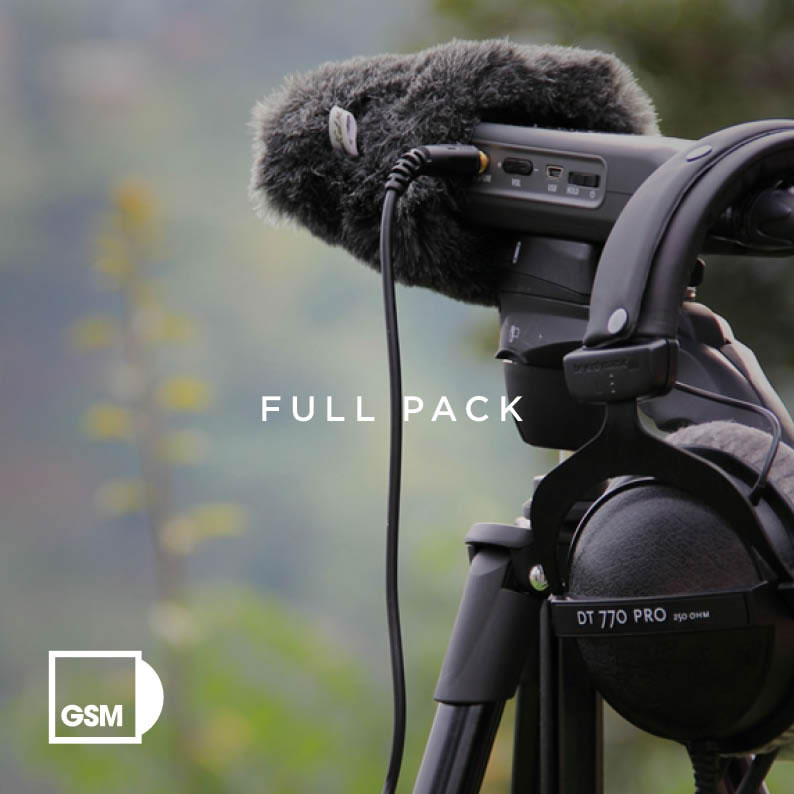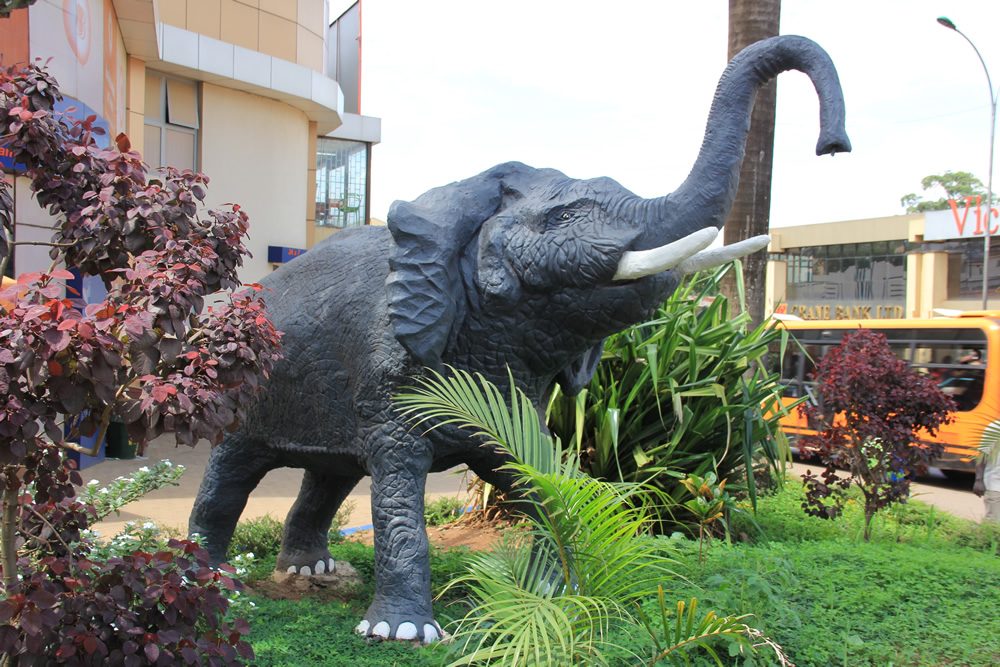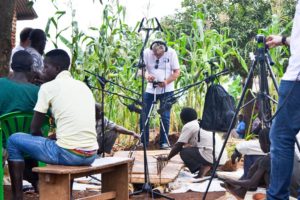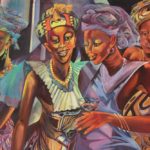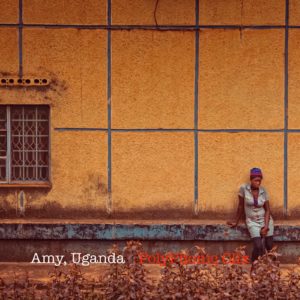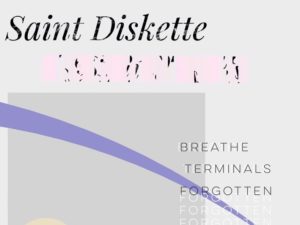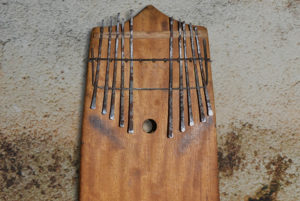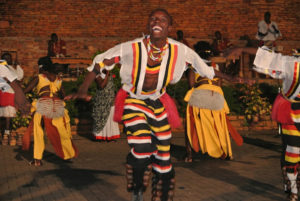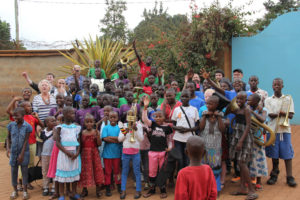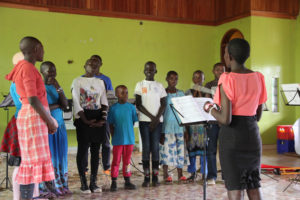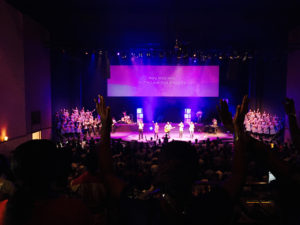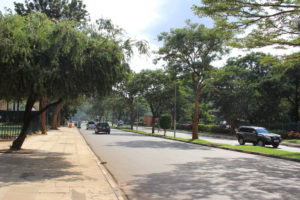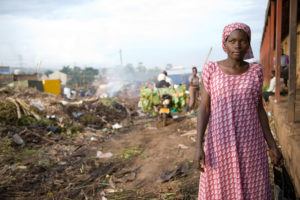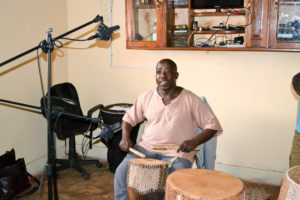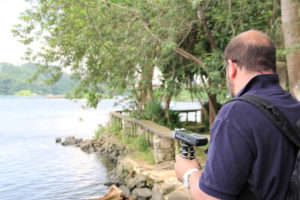Africa, Uganda: 21-27 July 2015
Project details
Uganda was our very first expedition, June 2015. The destination is a musically rich and diverse location, Uganda provided a wealth of instruments that were sampled both in remote villages north of Jinja and Iganga plus the capital city of Kampala. Of particular note was a Royal instrument named an Akandinda. This instrument was constructed the morning of the recording session by the ’Nakibembe Embaire Group’. Essentially this instrument is built by digging a hole in the ground that acts as a resonant chamber, lined with trunks of banana trees and tuned keys are placed across the frame creating a large tuned percussion instrument which is played by seven to eight individual musicians. As the resonant chamber is excavated at a detailed gradient the frequency response from low to high is well maintained. This provides a consistent and organized sound to the instrument as a whole. The tuning of the Akandinda is achieved solely by ear and the responsibility of one person. This technique is passed down from generations above and no electronic or acoustic reference is used, the result is a perfectly pitched pentatonic scaled musical instrument. The actual Akandinda recorded by GSM was constructed in the shade underneath a mango tree, outside, less than 30 feet from a dirt track used by farmers. With an audience of 250 plus made up from three different villages it was difficult to achieve the level of silence required for the recording session. However, the results surpassed expectation and it was felt by GSM that the final samples were totally unique.
Other instruments native to this region of Uganda were sampled, mostly stringed and percussive. These included; The Akogo, Embuutu, Endingidi, Endongo and Enasaai. Many more variations of these instruments were sampled.
Each destination GSM travelled to within Uganda encapsulated a unique ambient auditory environment that was recorded in high resolution in attempt to map the sonic territories of the country. Of particular note was the National Power Station, a dam constructed across the River Nile. The juxtaposition between the natural environment of the historic river including working fishermen and the industrialised sonic landscape provided interesting recordings that are exclusive to that specific location. ‘Audio Walks’ were carried out through Kampalal City Centre at multiple times of the day in order to portray the movement of the city.
Every instrument was sampled to create a sonically rich and exclusive library that has been put together for use in Logic’s EXS24 Sampler and Native Instruments Kontakt. You can purchase this here.
Full Pack
News & Press
Environmental Recordings
The team spent a considerable amount of time taking recordings of the environment on our visit. Clicking on the two pins to the right will allow you to sample some of the recordings.
The environmental and / location recordings are taken as 96Khz, 24bit WAVs to ensure high quality for a range of uses including; synchronisation to motion picture and background ambient tracks for games, film makers or music producers. Locations are scouted and selected based on sonic individuality providing unique collections of audio.

Global Sound Movement Times Higher Award Winners
This award is not just about us – the work we do allows us to connect cultures, break down social boundaries, and aid communities in need all over the world. The charities that we have worked with on our travels have turned into dearly valued partners.
Read more...

